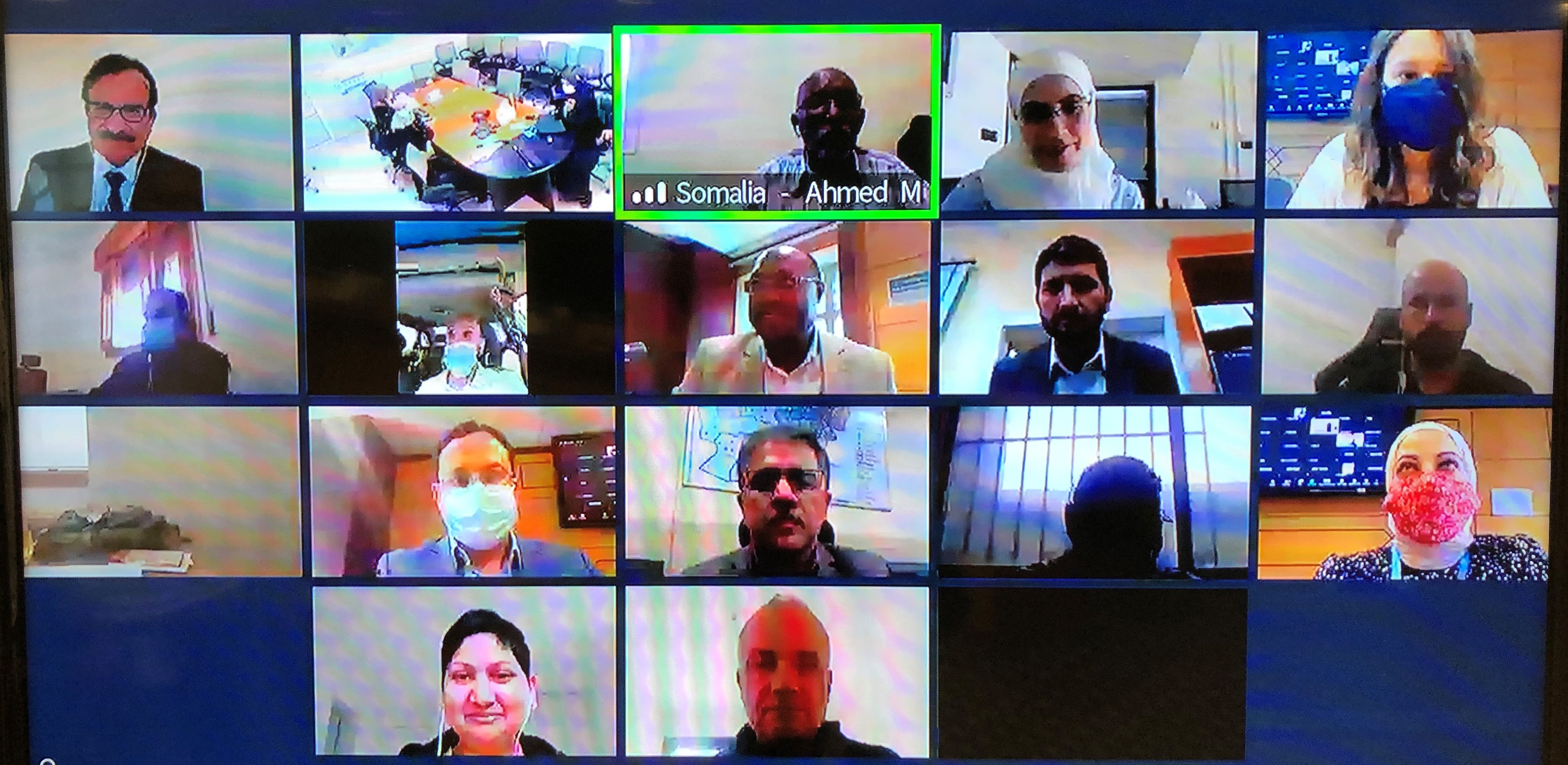WHO is supporting ministries of health in countries experiencing acute or protracted humanitarian crises to transition from the Early Warning Alert and Response Network (EWARN) disease surveillance system, designed for emergencies, back to their routine surveillance systems without losing years of investment.
EWARN is an adjunct to national disease surveillance systems and should only be transitioned or reintegrated into the national surveillance systems when feasible and once the acute emergency phase is over. Transition should be considered for countries or areas which are stable with improved security or a recovered health system.
The Infectious Hazard Prevention and Preparedness unit of the Health Emergencies programme held a 3-day virtual meeting in October with ministry of health and WHO country office focal points from 9 countries of the Eastern Mediterranean Region to discuss commonalities and overlap between EWARN and routine surveillance, resource allocation, objectives of the transition and its timeline, and training needs.
EWARN continues to be an excellent asset in reducing morbidity and mortality in humanitarian crises through timely detection and response to potential outbreaks of epidemic-prone diseases. However, there is also a global challenge of transitioning EWARN systems to the regular surveillance system as it remains the only working surveillance system even after many years of the original crisis, especially in protracted emergencies, and there should be a mechanism to transition to routine surveillance as the situation stabilizes.
Developing operational guidance
 The meeting, which was part of this year’s annual EWARN event, took place from 26 to 28 October 2020 and included participants from Afghanistan, Djibouti, Iraq, Islamic Republic of Iran, Libya, Somalia, Sudan, Syria and Yemen.
The meeting, which was part of this year’s annual EWARN event, took place from 26 to 28 October 2020 and included participants from Afghanistan, Djibouti, Iraq, Islamic Republic of Iran, Libya, Somalia, Sudan, Syria and Yemen.
Countries discussed their experience in leveraging the EWARN surveillance system for COVID-19 surveillance. This was followed by discussions on sustainable EWARN transition and exit strategies, EWARN transition scenarios, identifying challenges facing transitioning of EWARN, and agreeing on best practice for the incorporation of EWARN into routine surveillance systems.
The workshop then discussed recommended plans on how to move smoothly from EWARN to routine surveillance through identification of aims, objectives, and strategic activities, and the monitoring of progress. An operational guidance document was discussed and agreed upon for implementing EWARN integration or re-integration strategies, as well as the roadmap to implement such guidance should a transition become possible.
The meeting also provided health officials in EWARN-implementing countries the opportunity to systematically review the newly developed training materials and provide their input towards finalization.
At the end of the meeting, it was agreed that there will be a need to follow up with each country and engage in more detailed discussions over the transition process, as each country will have its own special circumstances, planning and training needs.
EWARN is doing a critical job in preventing large outbreaks in countries with fragmented health systems. In countries that have become stable, a careful transition is needed to prevent their populations from becoming vulnerable to future outbreaks, epidemics and pandemics as they may already be more susceptible due to the overall emergency situation in their countries.




